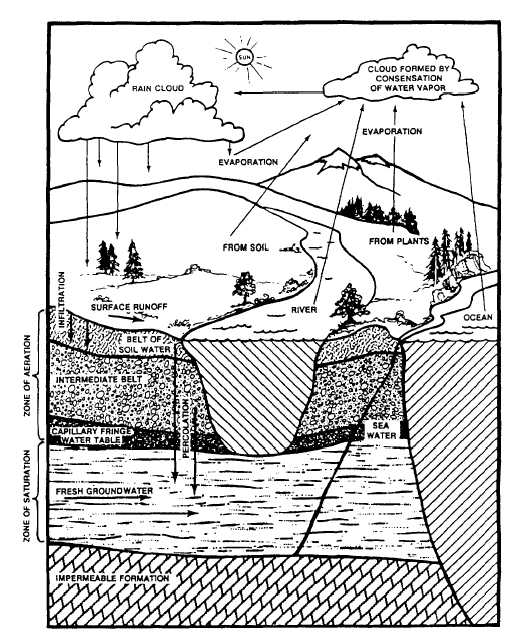Figure 9-1.–Hydrologic cycle and zone.
two layers of clay maybe a layer of sand which is both
sufficient, the Well may be free flowing. An aquifer(fig.
porous (holds water) and is permeable (allows the water
to flow). (See fig. 9-2).
A porous and permeable formation that can yield
water in usable quantities is called an aquifer (fig. 9-3).
If an aquifer is not confined by an impermeable layer
above it, the aquifer is said to be under water table
conditions and is subjectcd to atmospheric pressure. If
an aquifer is confined both above and below and the
recharge area or source of water is higher than the point
where a well is to be located, the water will be under
greater than atmospheric pressure and will rise to some
point above the water table. When the pressure is
9-3) under this condition is called an artesian.
Sedimentary, igneous, and metamorphic rock
formations are potential sources of water. Sedimental
rocks are the most common aquifers. They are formed
by the accumulation of sediments that have been
deposited by water, wind, or ice. Limestone is an
example of a sedimentary rock and is formed from the
accumulation of chemical compounds and minerals that
settle together out of water. Water percolating through
cracks and joints in a dense limestone deposit results in
underground streams and lakes. Throughout thick,
nearly horizontal layers of limestone, as well as shale
9-2


